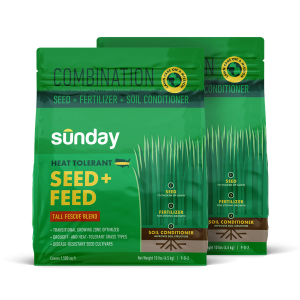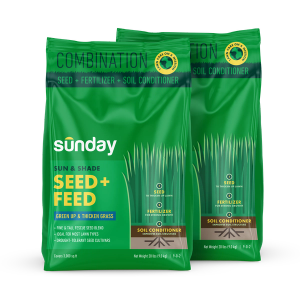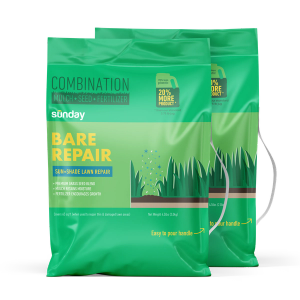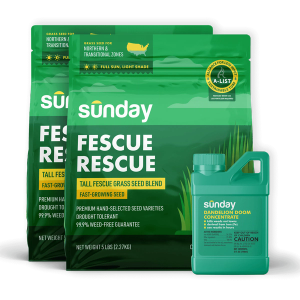Why test your soil?
The best way to determine your lawn soil's needs is with a soil test kit!
Understanding your soil's nutrients, pH level, and overall profile helps you make informed lawn care decisions, reducing unnecessary fertilizer use and promoting healthier, greener grass.
Sunday Tip:
Need help collecting soil samples from your lawn? Check out our soil test kit instructions for an in-depth how to!
Understanding your soil test kit results
Your lawn's soil test results may seem overwhelming, but we've broken down each component for you. From organic matter and cation exchange capacity (CEC) to soil pH and essential nutrients, we explain each metric and how it affects your lawn.
Key lawn soil properties
Organic Matter (OM)
Organic matter, derived from decomposing plant and animal material, is crucial for nutrient absorption and soil health. Ideally, you want at least 2% OM, with higher levels particularly beneficial for sandier soils.
Sunday Tip:
Organic matter is vital for your grass! It feeds millions of beneficial microbes in your soil, essential for healthier lawn growth.
Cation Exchange Capacity (CEC)
CEC measures your soil's ability to hold onto essential nutrients and water. A CEC score ranges from sandy soils (low CEC) to clay soils (high CEC). CEC levels will never change, but understanding your CEC can guide how you manage your soil and lawn:
- 0-8 meq/100g: Sandy soils (low CEC) — Nutrients may leach quickly, so smaller, frequent fertilizer applications (like Sunday liquid fertilizers!) are recommended.
- 8-20 meq/100g: Silt or loam soils (medium CEC) — These soils retain nutrients well, providing a good balance. Any Sunday custom plan will do!
- Over 20 meq/100g: Clay soils (high CEC) — While these soils hold nutrients well, they may need more attention to drainage and aeration. Unlimited expert lawn support is here to help!
Soil pH
Your soil's pH level can affect nutrient availability in your lawn. While the optimal range is between 6.5 and 7.0, lawns can generally tolerate a wide pH range. Meaning, even if your pH is outside this "optimal" range, most grasses are adaptable!
Regional soil profile
Beyond just nutrients, understanding your soil texture—sandy, silty, or clayey—helps predict water retention and nutrient availability. Each soil type requires specific care for optimal lawn health.
Essential Nutrients
Macronutrients:
- Nitrogen (N): Vital for grass growth and greening, nitrogen levels fluctuate frequently, so we don't test for it directly. Instead, Sunday custom plans are designed to provide the right amount over time based on your lawn size and specific needs.
- Phosphorus (P): Important for root development in new or renovated lawns, this nutrient is typically already in sufficient amounts in most soils! The ideal level is around 21 ppm. Sunday avoids phosphorus in our fertilizers to prevent harmful runoff unless your soil is deficient.
- Potassium (K): Enhances stress tolerance and overall plant health, with adequate levels starting at 37 ppm. Sunday fertilizers include potassium to boost your lawn's resilience against heat and drought.
Secondary nutrients & micronutrients:
- Calcium (Ca): Essential for plant structure and frost resistance, most soils have adequate calcium. However, we can help support through targeted applications and liming support!
- Magnesium (Mg): Crucial for chlorophyll production, maintaining a lush green color in your lawn. Most lawns have sufficient magnesium levels.
- Sulfur (S): Aids in growth and disease prevention. Ideal sulfur levels are at or above 7 ppm. If deficient, Sunday provides targeted pouches to adjust levels gradually.
- Iron (Fe), Boron (B), Manganese (Mn), Copper (Cu), and Zinc (Zn): While needed in smaller amounts, these micronutrients play significant roles in maintaining lawn health, color, and disease resistance. Sunday's plans include these necessary nutrients to promote a greener, healthier lawn.
Practical lawn care tips based on your soil test
Understanding your soil test results is the first step toward a healthier lawn. Here's how to act on your results:
- Nitrogen management: Apply nitrogen-based fertilizers regularly throughout the season, monitoring lawn color and growth. Adjust applications based on weather and seasonal conditions—your custom plan and Yard Advisors can help you do this!
- Phosphorus, Sulfur, or Potassium deficiency: If any of these nutrients are deficient, Sunday will automatically adjust your plan to address these deficiencies immediately.
- Low Organic Matter (OM): To improve soil structure and nutrient content, consider topdressing with compost or mulch. This adds organic matter and helps sustain microbial life in your soil.
- Adjusting for CEC: While you can't change your soil's CEC, you can adapt your care practices. For sandy soils (low CEC), use slow-release fertilizers to maintain nutrient levels. For clay soils (high CEC), focus on improving drainage and aeration.
- Optimizing pH: If your soil is too acidic, consider adding lime. Sulfur compounds can help lower the pH of alkaline soils. Remember, grasses can thrive across a wide range of pH levels, so extreme adjustments are rarely necessary.
Sunday Tip:
Watch for signs of compaction or other physical soil issues that a soil test can't fix. Aerating your soil or avoiding planting in unsuitable areas can prevent problems like thatch and bare spots.
FAQs about your soil test kit
Why include a soil test kit in a lawn plan?
Your soil test reveals key factors like organic matter, pH, and nutrient levels, which inform your custom fertilizer plan and help you grow a lush, healthy lawn with your soil.
What sets Sunday's soil test kit apart?
Sunday uses the Minimal Levels of Sustainable Nutrition (MLSN) approach and partners with top-tier third-party labs for accurate, unbiased results. This sustainable method ensures your lawn gets precisely what it needs—no more, no less.
How do I complete a soil test kit?
Follow our simple soil test kit instructions: collect, combine, label, and send soil samples. Once the lab receives your kit, you'll get comprehensive results on essential nutrients, pH, and organic matter within 3-4 weeks.
What happens if my soil test shows a deficiency?
Testing is just the beginning! If your lawn has deficiencies, Sunday's customized plans and Lawn Advisor support will guide you through steps to improve your soil health.
Bought a soil test without a Custom Lawn Plan?
After we analyze your soil (about 4 weeks after we receive it!), we'll email you your results and recommendations. For best results, pair your soil test with a custom lawn plan to make sure your lawn receives the right nutrients.
Understanding physical soil properties
While Sunday's soil test kit focuses on chemical analysis, understanding the physical properties of your soil—like texture and compaction—is equally important. Compaction, for example, reduces soil porosity and can lead to thin grass and bare spots. If you suspect compaction, consider aeration or learn more about managing soil structure effectively.
Ready to dig deeper?
Explore our library of soil health resources, including instructional videos and blogs, to deepen your understanding of soil health and its benefits for your lawn year after year!
Sunday soil blogs:
- Why Soil Health Matters
- Soil Food Web
- What is Soil Structure?
- What is Soil Texture?
- How to Fix Soil Compaction
- How to Test Soil Drainage
- Soil Health and New Lawns
Integrating a soil test kit into your lawn care routine ensures a healthier, more resilient lawn that thrives year-round. With Sunday's support, decoding your soil test is just the beginning of achieving a greener, healthier lawn.
Let's get growing
Our lawn engine uses your soil test kit results, along with a personalized lawn quiz and lawn data (like lawn size, rainfall, grass type, and more!) to create the perfect lawn plan just for you and your lawn.




















